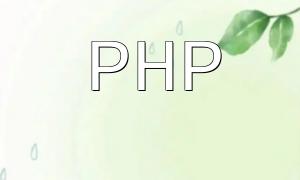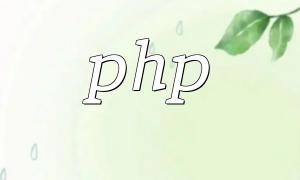In PHP development, maintaining clean and sustainable code is essential for long-term project stability. A well-maintained codebase not only reduces maintenance costs but also boosts development efficiency. This article discusses how to use PHP’s error and exception handling mechanisms to improve code maintainability, with practical implementation examples.
PHP’s error handling mechanism is designed to generate and display error messages when something goes wrong in the code. These messages are invaluable for debugging and maintenance. However, many developers do not fully understand how to properly handle or utilize these errors, which can lead to low-quality and hard-to-maintain code. By leveraging PHP’s error reporting effectively, developers can build cleaner and more maintainable code.
During development, enabling comprehensive error reporting can help detect issues early. You can add the following code at the beginning of your script:
error_reporting(E_ALL);
ini_set('display_errors', '1');This ensures that all levels of errors are reported and displayed, allowing developers to identify problems immediately.
PHP provides the set_error_handler() function, which lets you define a custom error handling routine. With a custom handler, you can log errors, send notification emails, or take other actions depending on your needs. Here’s an example:
function custom_error_handler($errno, $errstr, $errfile, $errline) {
// Log error details
error_log("Error: $errstr in $errfile on line $errline");
// Send email to developer
$to = "developer@example.com";
$subject = "PHP Error";
$message = "Error: $errstr in $errfile on line $errline";
mail($to, $subject, $message);
// Display a user-friendly message
echo "An error occurred. Please try again later.";
// Optionally stop script execution
// exit();
}
set_error_handler("custom_error_handler");By customizing your error handling process, you can ensure that issues are logged properly and that developers are notified in time, improving code reliability and maintainability.
In addition to error reporting, PHP also supports exception handling for more controlled and structured error management. Using a try...catch block allows you to handle exceptions gracefully without crashing the application:
try {
// Code block
} catch (Exception $e) {
// Log exception details
error_log("Exception: " . $e->getMessage() . " in " . $e->getFile() . " on line " . $e->getLine());
// Display a friendly error message
echo "An error occurred. Please try again later.";
}This approach gives you flexibility in how errors are managed and ensures your code remains stable even when unexpected issues occur.
Maintaining PHP code quality is a key responsibility for every developer. By enabling error reporting, creating custom error handlers, and using exception handling properly, developers can effectively detect and resolve issues, resulting in more stable and maintainable applications. The examples and techniques in this article can help you improve your PHP projects and write cleaner, more reliable code.









